Understanding the Critical Role of Workload Planning in Retention
In today’s competitive employment landscape, employee retention is more than just good HR practice; it's a strategic imperative. As organizations grapple with high turnover costs—estimated at around $39,600 per employee—and rising employee expectations, smarter workload planning emerges as a vital lever for fostering loyalty, engagement, and satisfaction. This article explores the untold link between intelligent workload management and employee retention, emphasizing the importance of integrating modern technology, performance strategies, and workplace culture.
The Strategic Importance of Workload Planning in Retention
How does workload planning influence employee retention?
Workload planning plays a crucial role in keeping employees committed and satisfied with their jobs. When workloads are well-managed, employees are less likely to experience burnout, a common reason for turnover. By evenly distributing tasks and setting realistic expectations, organizations create a healthier work environment where employees feel valued and supported.
Effective workload management also boosts job satisfaction. Employees who perceive that their tasks are fair and manageable tend to be more engaged and loyal. This sense of fairness and balance fosters trust in leadership and enhances overall morale.
Supporting sustainable work environments is essential for long-term retention. Proper workload planning involves clear communication about expectations, flexibility to accommodate personal needs, and regular checks to adjust burdens as needed. These strategies help prevent overwhelming employees and encourage them to stay with the company.
In addition, strategic workload planning ensures better resource utilization and allows for timely project delivery. By avoiding overloading staff, organizations maintain high performance levels and prevent frustration or exhaustion.
In summary, structured workload planning directly influences employee retention by promoting well-being, engagement, and satisfaction. When organizations prioritize balanced task distribution and sustainable work practices, they foster a workplace where employees are motivated to grow and stay long-term.
Linking Performance Management and Employee Development to Retention
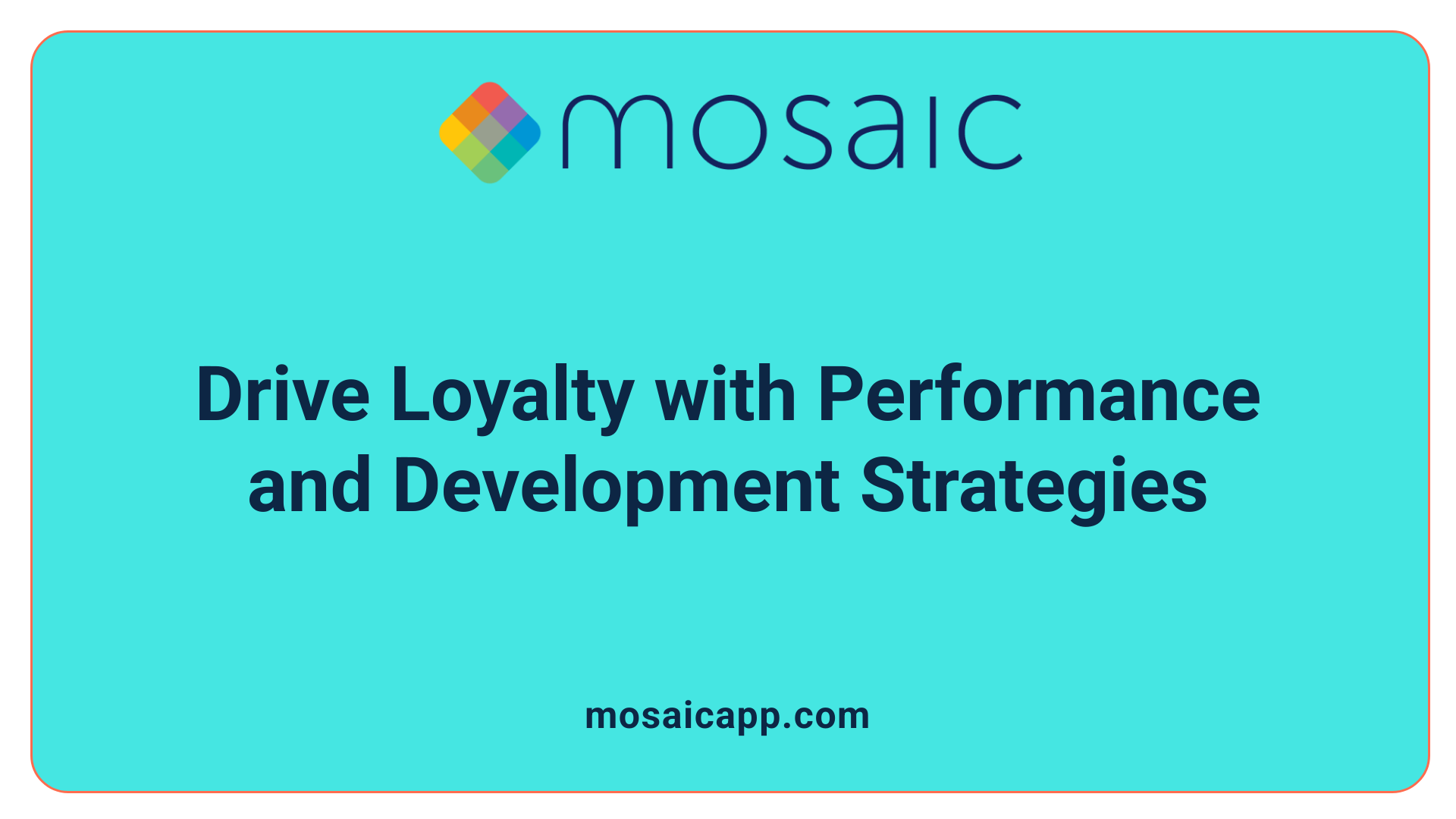
How are performance management and development connected to employee retention?
Performance management and employee development are integral to retaining staff by fostering a stimulating and supportive work environment. When organizations establish clear performance expectations through goal setting—especially using frameworks like SMART goals—employees understand what is expected of them and how their work contributes to overall success.
Regular feedback sessions, including one-on-one meetings and coaching, keep employees engaged and allow managers to address concerns early. Personal development plans tailored to individual career aspirations enhance job satisfaction by demonstrating the organization’s investment in growth.
Leadership plays a vital role in creating a culture of psychological safety, where employees feel confident to voice ideas or concerns without fear of negative consequences. This environment encourages risk-taking, skill development, and innovation, all of which foster loyalty.
Aligning employee efforts with organizational objectives boosts motivation and gives employees a sense of purpose. Recognizing achievements and providing opportunities for advancement further strengthen commitment.
In conclusion, merging consistent performance management with personalized development initiatives nurtures a motivated, engaged workforce that is more likely to stay with the company long-term.
Why is ongoing feedback and goal setting essential?
Regular, structured feedback helps employees understand their progress and areas for improvement. When managers set clear, measurable goals and revisit them frequently, staff remain focused and motivated. This ongoing process increases engagement and enables early intervention if performance issues arise, reducing the risk of turnover.
How do personalized development plans impact retention?
Customized development pathways demonstrate an organization's commitment to individual growth. These plans align employees’ aspirations with strategic objectives, making them feel valued. Access to training, mentorship, and career advancement opportunities encourages loyalty and reduces the desire to seek opportunities elsewhere.
How important is leadership support and psychological safety?
Supportive leaders foster an environment where employees feel safe to express ideas and take risks. Psychological safety promotes innovation, confidence in leadership, and a sense of belonging. When employees perceive genuine support, their engagement and retention levels increase, contributing to a positive organizational culture.
| Aspect | Benefits | Additional Details |
|---|---|---|
| Clear Goals | Increased focus | SMART objectives provide clarity and direction |
| Regular Feedback | Engagement boost | Keeps employees aligned and motivated |
| Personalized Development | Loyalty & Growth | Tailors opportunities to individual needs |
| Leadership Support | Psychological safety | Enhances trust and collaboration |
| Recognition & Rewards | Job satisfaction | Reinforces positive behaviors |
By implementing these interconnected strategies, organizations can effectively enhance employee retention and build a resilient, motivated workforce.
The Impact of Smarter Workload Strategies on Employee Loyalty
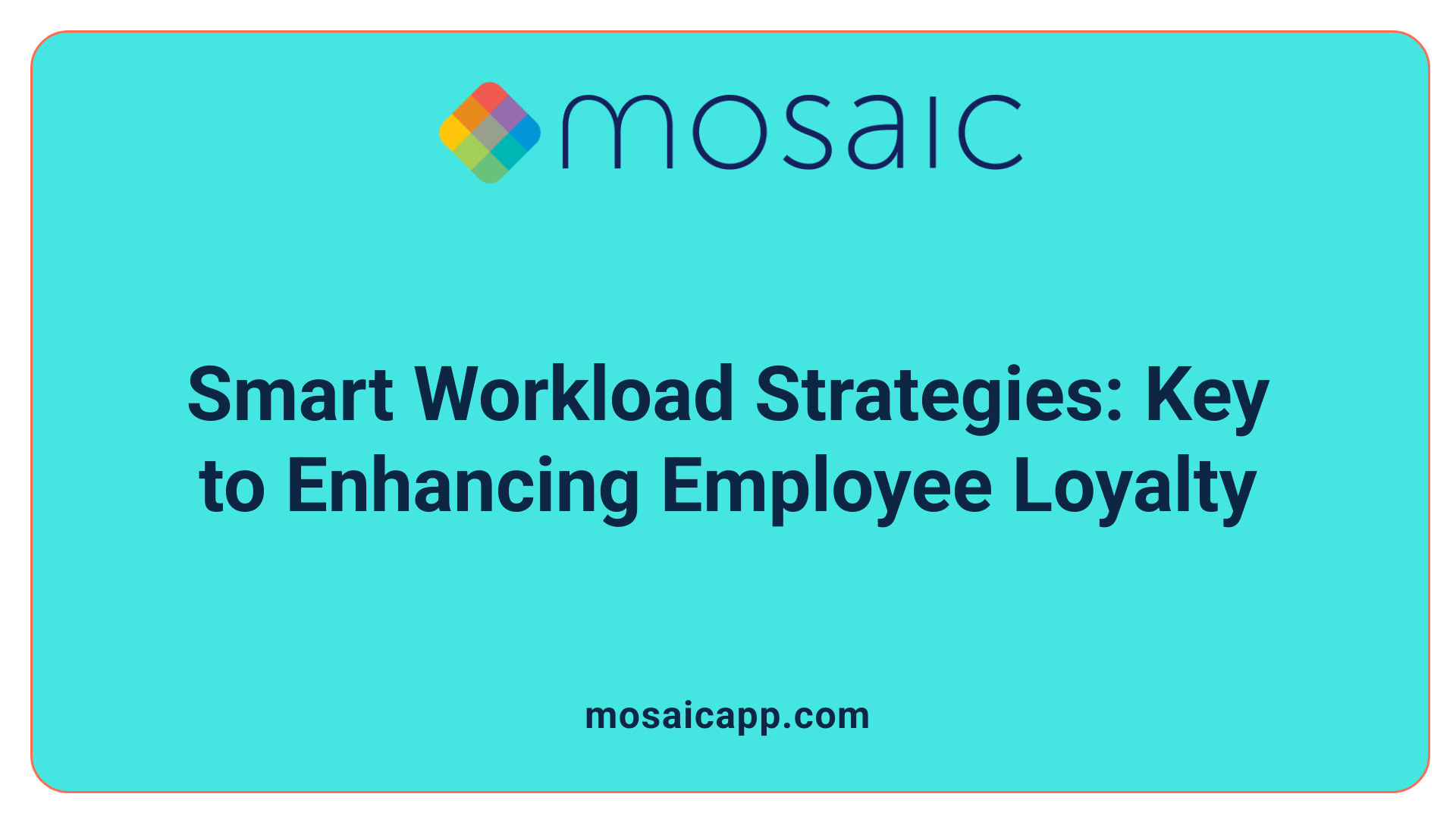
Promoting work-life balance with flexible arrangements
One of the most effective ways to improve employee loyalty is by promoting work-life balance through flexible work arrangements. Employees today, especially Millennials and Gen Z, expect a modern work environment equipped with flexible options such as remote work, hybrid schedules, and adaptable hours. When organizations offer these choices, they meet employee expectations for connectivity and autonomy, which can significantly boost satisfaction.
In turn, flexible arrangements help reduce stress and burnout—two concerns expressed by about two-thirds of employers. These strategies also lessen the frustration caused by outdated or restrictive work setups, creating a more positive, engaging workplace culture.
Aligning roles with employee strengths
Aligning job roles with individual strengths and motivations is another crucial component of smarter workload planning. When employees are given responsibilities that fit their skills, they perform better, feel more confident, and develop a greater sense of purpose.
This targeted approach not only enhances productivity but also encourages internal mobility and personal growth. Employees see clear pathways for advancement within the organization, which fosters long-term commitment and diminishes turnover.
Proactive monitoring to prevent burnout
Monitoring workplace stress levels and engagement through regular surveys and analytics allows organizations to identify early signs of burnout. Many companies are adopting tools to listen to employees’ feelings about workload, culture, and work-life balance.
Proactive intervention, such as adjusting workloads or providing additional support, can prevent burnout before it leads to turnover. These early strategies demonstrate an organization’s commitment to employee well-being, reinforcing loyalty and retention.
| Strategy | Impact | Additional Details |
|---|---|---|
| Flexible work arrangements | Enhances work-life balance and attraction | Supports remote/hybrid models, flexible hours |
| Role alignment with strengths | Boosts performance, confidence, and growth | Promotes internal mobility and personalized development |
| Monitoring and early intervention | Prevents burnout, improves engagement | Uses surveys and analytics to detect early signs of stress |
By integrating these smarter workload strategies—flexibility, alignment, and proactive monitoring—organizations create a supportive environment that values employee well-being. This approach not only reduces turnover but also builds a loyal, motivated workforce committed to organizational success.
Integrating Workplace Technologies with Workload and Retention Strategies
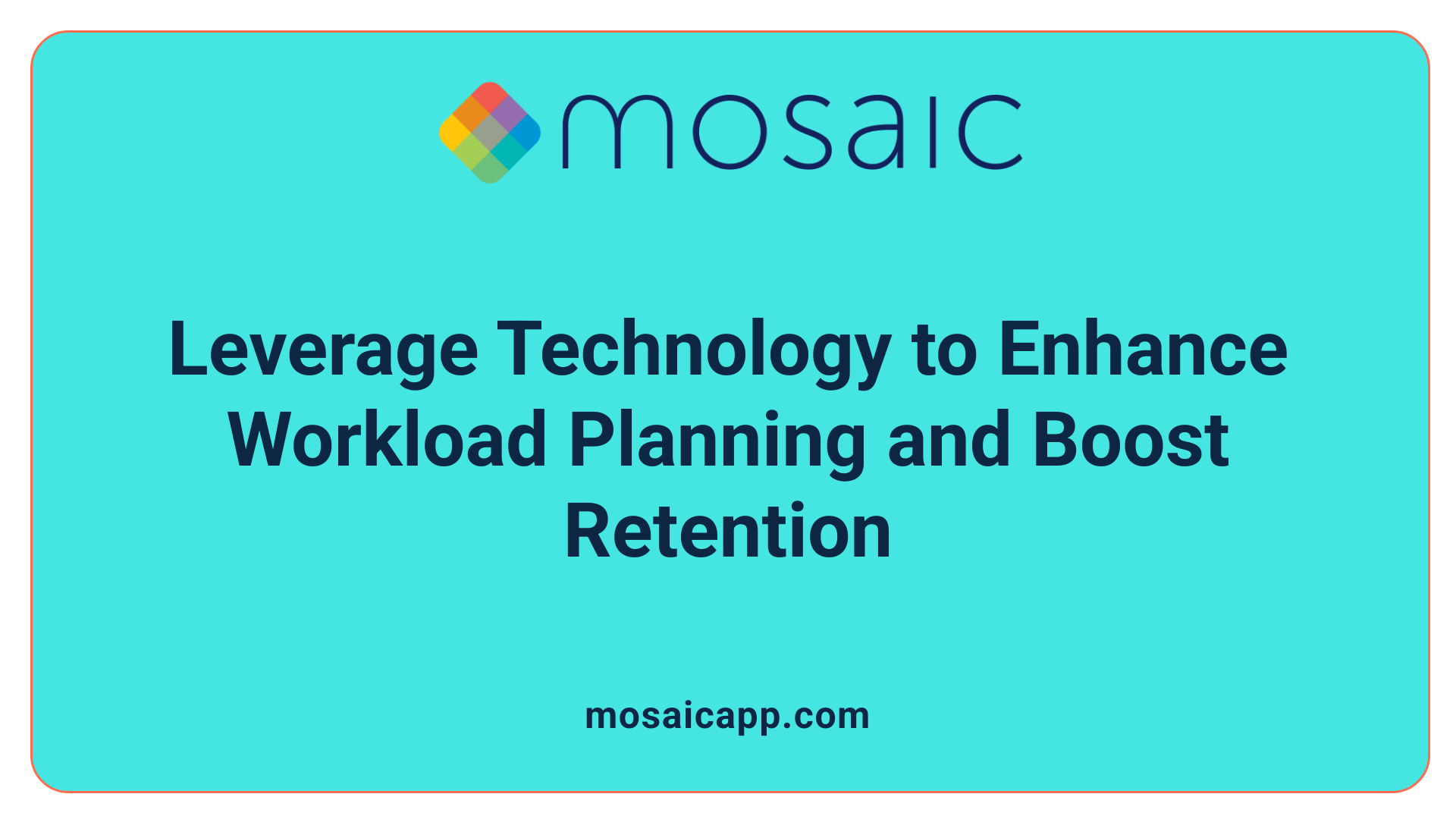
How does workplace technology support workload planning and employee retention?
Workplace technologies are fundamental in managing work demands effectively and keeping employees engaged and satisfied. Advanced project management tools like Asana, Trello, and Microsoft Planner enable teams to organize tasks more efficiently, ensuring an even distribution of workload. These platforms provide real-time updates, helping managers identify overburdened employees early and reassign tasks to prevent burnout.
Automation and AI-driven analytics further enhance workload management by forecasting staffing needs and identifying skills gaps. For example, talent management platforms can analyze performance data to recommend training or internal mobility options, aligning workforce capabilities with operational goals.
Modern communication systems streamline collaboration across different locations and time zones. Tools like Slack or Microsoft Teams, integrated with project management platforms, foster seamless communication, reduce misunderstandings, and speed up decision-making.
Implementing flexible work solutions
Flexible work arrangements, such as remote work or flexible hours, are vital for modern organizations aiming to retain top talent. Technologies like video conferencing, cloud storage, and VPN access ensure that employees can work efficiently from anywhere while maintaining connectivity.
By enabling remote work, organizations meet the expectations of Millennials and Gen Z employees, who value high-tech, flexible environments. These solutions not only increase job satisfaction but also help reduce turnover by providing employees with the work-life balance they desire.
Digital tools also support flexible scheduling and quick adjustments in response to workload fluctuations, fostering a resilient and motivated workforce.
Using data-driven insights for proactive intervention
Data analytics play a pivotal role in preemptively identifying at-risk employees and addressing potential issues before they lead to turnover. Regularly analyzing engagement surveys, performance metrics, and even sentiment analysis from communication channels provide insights into work satisfaction and stress levels.
Predictive analytics can pinpoint departments or teams experiencing high stress or burnout, prompting targeted interventions such as workload redistribution, additional support, or recognition programs.
Organizations that leverage these insights to make informed decisions create a proactive culture that emphasizes employee wellbeing, supports retention, and enhances overall productivity.
| Technology Tool | Functionality | Impact on Retention | Additional Notes |
|---|---|---|---|
| Project Management Software | Organizes and assigns tasks, tracks progress | Reduces overwork, improves clarity | Examples include Trello, Asana |
| AI Analytics Platforms | Forecast staffing needs, recommend training | Supports agility, internal growth | Examples include SAP SuccessFactors |
| Communication Tools | Facilitates remote collaboration | Maintains connectivity, satisfaction | Examples include Slack, Teams |
| Employee Engagement Platforms | Gathers feedback, predicts risks | Proactively addresses issues | Examples include Culture Amp, Glint |
Utilizing these technologies strategically not only optimizes workload management but also fosters an environment that values innovation, flexibility, and employee wellbeing, leading to higher retention rates.
Why Intelligent Workload Management is the Foundation of a Satisfied Workforce
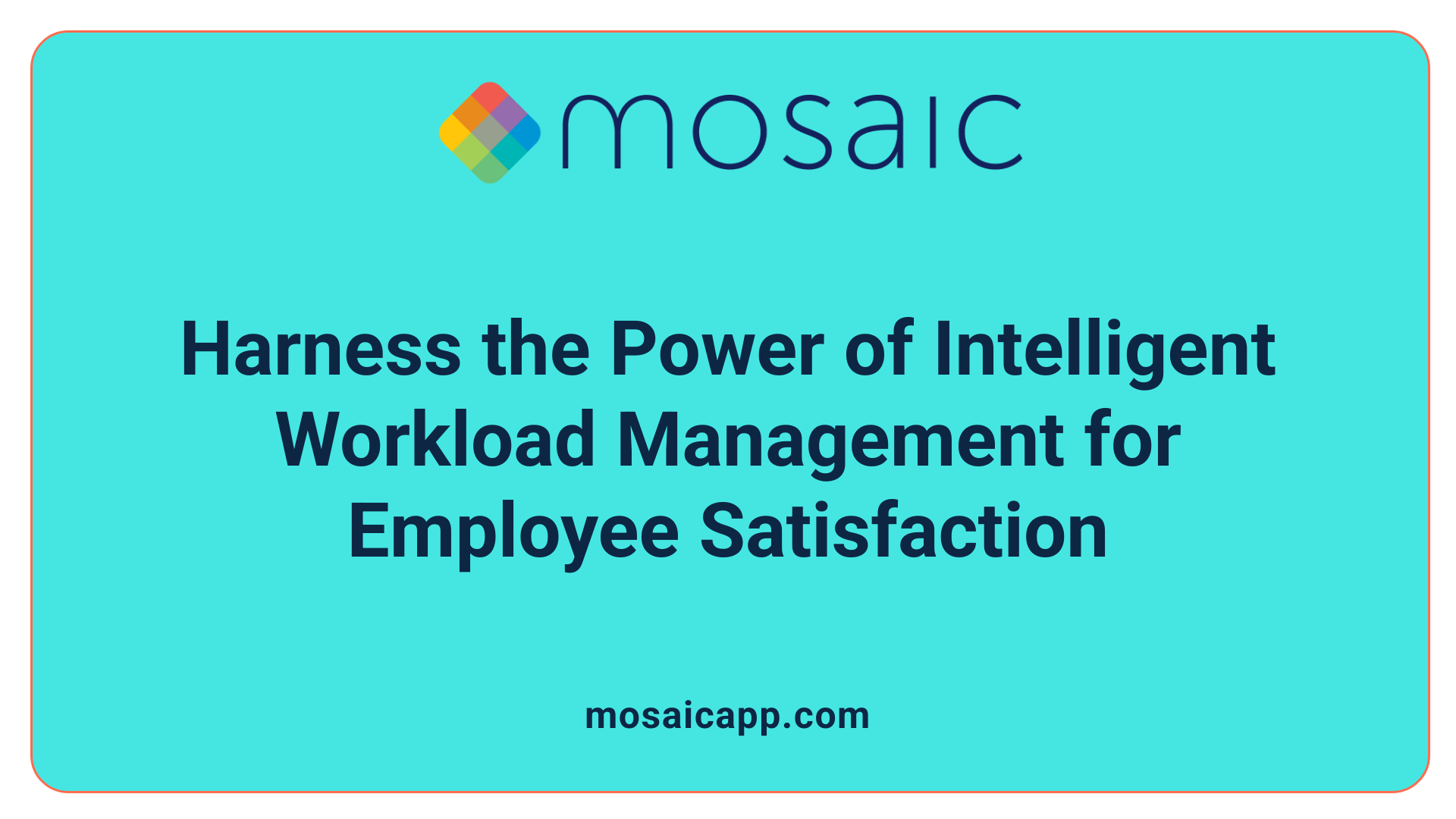
Why is intelligent workload management important for employee satisfaction and retention?
Effective workload management plays a vital role in maintaining employee happiness and loyalty within organizations. When tasks are assigned fairly and aligned with each employee’s skills, availability, and capacity, it helps prevent feelings of overwhelm and burnout. This balance encourages a healthier work environment and boosts overall job satisfaction.
Utilizing integrated workplace management systems (IWMS) enhances operational efficiency by streamlining task distribution, resource scheduling, and facility management. These systems support flexible work arrangements, such as remote or hybrid models, which are increasingly important to today’s workforce. Such flexibility can significantly improve work-life balance, reducing stress and fostering greater engagement.
Furthermore, data-driven insights from advanced management tools allow organizations to identify employees who might be at risk of burnout or disengagement. Prompt interventions, like workload adjustments or additional support, can help retain valuable talent.
Workplace technology also contributes to safer and more comfortable environments. By improving safety protocols and work conditions through integrated systems, companies promote employee well-being, leading to a more committed and productive team.
Overall, when organizations adopt intelligent workload management practices, they create responsive workplaces that meet the evolving needs of their employees. This approach not only enhances satisfaction but also strengthens retention efforts, securing a motivated, loyal, and high-performing workforce.
Emerging Trends and Future Directions in Workload Planning and Retention
Growth of AI and automation
Artificial intelligence (AI) is making significant inroads into workplace practices, particularly in promoting inclusion and reducing bias. Currently, only about 24% of organizations build inclusive behaviors into employee roles, highlighting potential for growth. AI tools can support diversity initiatives and help create fairer work environments. These technologies also streamline routine tasks, freeing up employees for more meaningful work and improving overall job satisfaction.
Focus on mental health and resiliency programs
Many organizations recognize that stress and burnout are major challenges, with approximately 67% expressing concern about their impact. Nevertheless, less than a quarter offer mental health training for managers, and only around half feel their managers are ready to refer employees to mental health services. Efforts are underway to implement stress management and resiliency initiatives, but a comprehensive approach including manager training remains lacking.
The evolving role of workplace technology
Workplace technology is central to employee retention. Modern tools enhance productivity, communication, and collaboration, especially for Millennials and Gen Z workers who expect high connectivity standards. Outdated systems can lead to frustration and increased turnover. Leaders investing in up-to-date workplace tech not only boost employee performance but also demonstrate a progressive outlook that attracts top talent. Employee satisfaction surveys and analytics further help organizations address needs proactively, securing workforce stability.
Conclusion: Building a Resilient Workforce through Smarter Workload Strategies
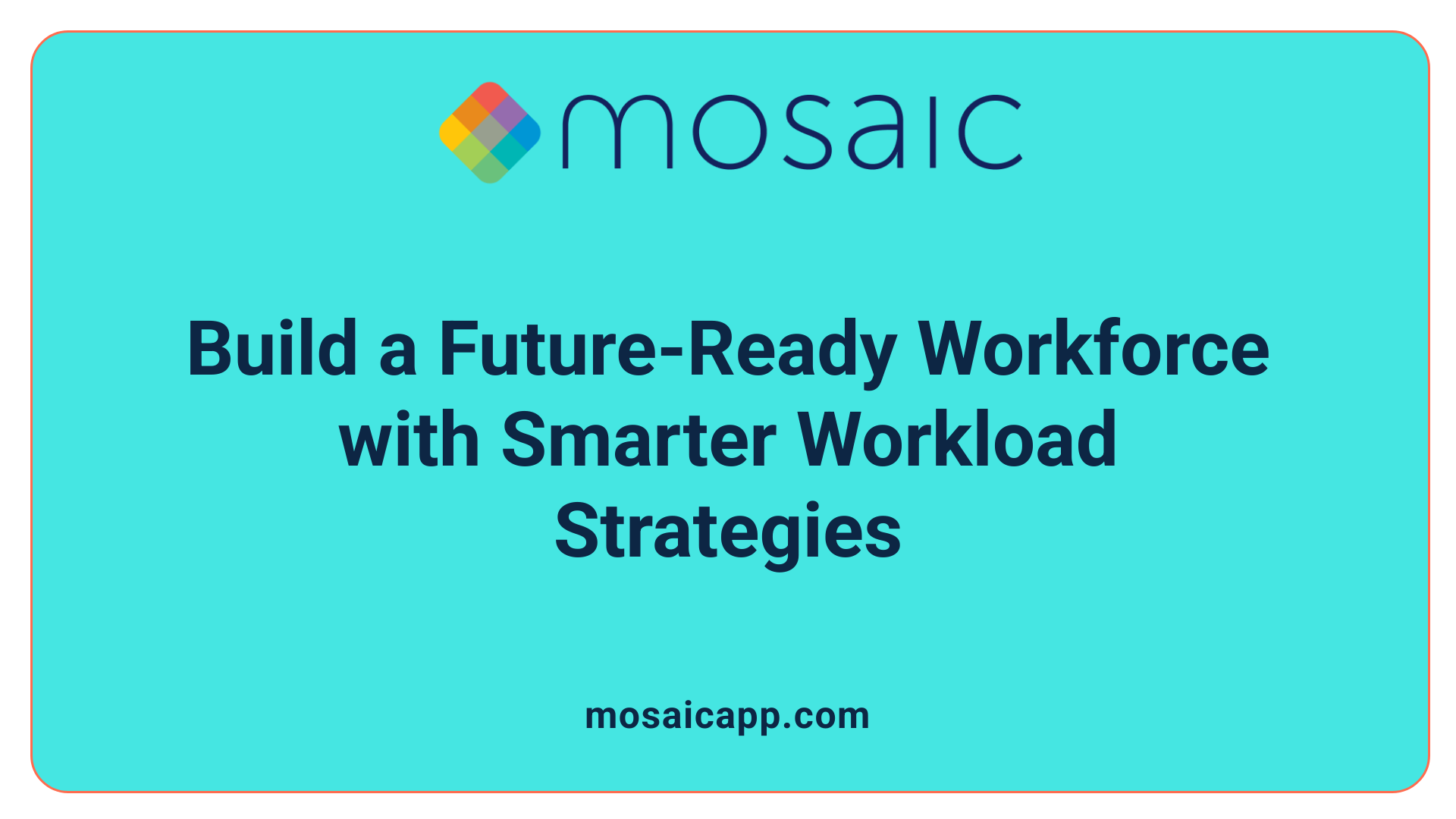 In today’s competitive job market, organizations recognize that employee retention is vital for long-term success. Key factors influencing retention include career development, workplace technology, inclusive culture, and effective workload management. When employees feel valued, supported, and engaged, they are more likely to stay committed to their organizations.
In today’s competitive job market, organizations recognize that employee retention is vital for long-term success. Key factors influencing retention include career development, workplace technology, inclusive culture, and effective workload management. When employees feel valued, supported, and engaged, they are more likely to stay committed to their organizations.
Implementing data-driven workload management plays a critical role in fostering job satisfaction. By balancing tasks fairly and aligning them with employees’ skills and capacities, employers can reduce stress and combat burnout. Modern workplace management systems provide real-time insights, helping leaders identify employees at risk of leaving and enabling targeted interventions.
The benefits extend beyond individual well-being. Integrated strategies that combine intelligent workload planning with flexible work arrangements and ongoing development opportunities create a resilient workforce. Over time, this approach leads to higher productivity, improved morale, and a stronger organizational culture.
Incorporating these strategies is a long-term investment. They not only help retain top talent but also build an adaptable, future-ready organization. As the workplace evolves, leveraging data and technology to manage workloads effectively will remain essential to maintaining a motivated, engaged, and loyal workforce.
Fostering a Future-Ready Workforce Through Strategic Planning
As organizations realize that smarter workload planning directly correlates with higher employee retention, the imperative to leverage modern technology, performance strategies, and workplace culture becomes clear. By adopting intelligent, data-driven approaches to workload management, companies can promote work-life balance, support professional development, and create inclusive, engaging environments that inspire loyalty. The future of work is about resilience, adaptability, and employee well-being—values that are best upheld through proactive, strategic workload planning. In doing so, organizations not only mitigate costs associated with turnover but also build a committed, motivated workforce prepared to meet the challenges of tomorrow.
References
- New Report Shows Employee Retention Outranks Almost ...
- Employee Retention & Workplace Technology, the hidden ...
- How Performance Management Drives Employee ...
- Exploring the direct link between employee development ...
- The Secret to Employee Retention Is Employee Engagement
- Employee Retention Strategy Guide: 25 Ways to Keep Top ...
- Workload Planning: A Complete Guide for Your Teams
- 10 Employee Retention Strategies That Work
- 7 Employee Retention Best Practices [2025]
- Employee Retention Strategy Guide: 25 Ways to Keep Top ...


